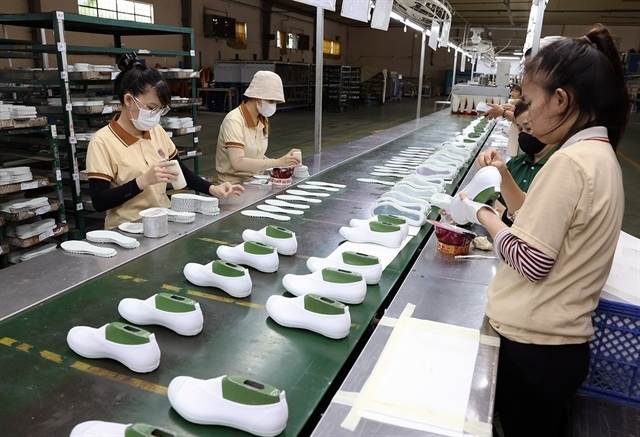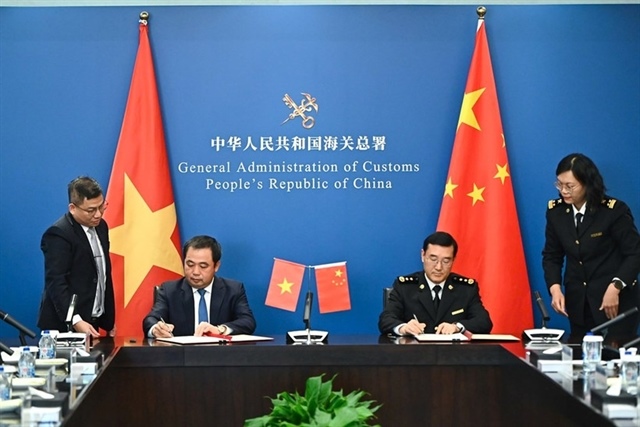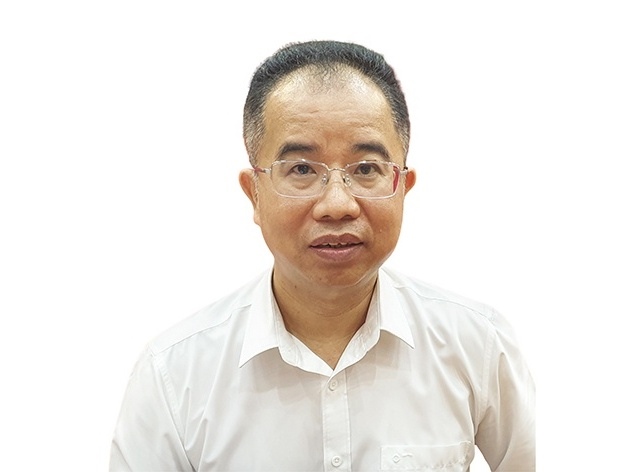Free trade signings stimulate success
Free trade signings stimulate success
Fuelled by its positive performance in 2019, Vietnam is expected to continue witnessing high growth in the year to come, Michael Mugliston and Milton Churche, visiting fellows from the Institute for International Trade at the University of Adelaide in South Australia, provide analysis on the outlook for the Vietnamese economy in 2020 amid the country’s growing international integration.The global economic outlook moving into next year remains uncertain. The Organisation for Economic Co-operation and Development’s (OECD) Economic Outlook for November estimates that global trade growth in 2019 slowed to 1.2 per cent, the weakest rate for a decade. Furthermore, the OECD – in line with World Trade Organization and IMF projections – predicts only a modest recovery in 2020-2021, with trade growth, at around 1.5 per cent in 2020 and 2.25 per cent in 2021, remaining below the 2013-2018 average.
The stagnation in trade has been a major factor in bringing down the OECD’s estimate of global GDP growth in 2019 to just under 3 per cent, and it is projected to remain around this level in 2020-2021. Again, these are the weakest annual growth rates since the 2008-2009 global financial crisis.
A key factor in global trade stagnation and weak global investment has been trade policy uncertainty, which has increased significantly during the past two years. Researchers measuring levels of trade policy uncertainty have described the increase as “extraordinary” and noted that the recent rise in trade policy uncertainty “threatens to become the new normal.”
The US-China trade tensions and the resulting significant tariff increases, general uncertainty over the direction of US trade policy, continuing Brexit-related insecurity in Europe, and rising geopolitical tensions all contribute to a highly vague policy environment that is adversely affecting investment in many parts of the world.
A recent survey published by the European Investment Bank reported that more than 70 per cent of surveyed businesses in the EU and the US referred to uncertainty as a reason not to invest.
Growing partnerships
Current global challenges to economic prospects have highlighted both the threat posed by high levels of uncertainty to investment and growth, and the importance of governments working together and co-operating to reduce doubt and provide an environment conducive to growth.
There has been lack of progress in WTO negotiations, failure to agree on appointments to the WTO Appellate Body, trade restrictive actions by major powers, and failure or prolonged delay in making progress in many trade conversations between countries, including in reaching a US-China trade deal.
These failures have raised serious concerns about whether governments can engage in the level of co-operation required to restore the business confidence necessary for higher growth levels.
However, the challenge to the rules-based trading system should be kept in perspective. WTO rules continue to govern most world trade and a growing number of free trade agreements (FTAs) have added additional depth to the rules governing major trade flows.
The global economy remains highly integrated through international production networks, sophisticated supply chains, and high levels of cross-border investment. While there has been speculation about a possible “decoupling” of the US and Chinese economies and a realignment of trade flows – and a process of reorganising trade and production seems to be underway in response to US-China tensions – there has not yet been any significant unwinding of the existing high levels of economic integration.
Furthermore, action by central banks has helped prevent a further worsening of the economic outlook, and illustrated the key role that can be played by timely and complementary action in a critical group of countries to respond to global economic challenges.
Vietnam’s situation
Vietnam is well-placed both to present a good story about its own place within the world economy and to play a positive role with regional partners in finding a path to reinvigorate international co-operation. It is a member of the WTO, a party to the FTA between ASEAN member states as well as to the series of ASEAN+1 FTAs with major trading partners in the region, and a beneficiary of the Comprehensive and Progressive Agreement for Trans-Pacific Partnership (CPTPP).
The ASEAN FTAs and the CPTPP account for a significant share of Vietnam’s trade as well as encompassing a diverse range of economies that account for major shares of global GDP and trade.
The CPTPP’s high number of commitments, and the quality and reach of its rules in seeking to address contemporary trade issues like digital commerce, competition policy, and state-owned enterprises, make it a new-generation trade agreement that is highly relevant to today’s business community.
These features of its FTAs should all make Vietnam an attractive investment destination in a world where greater certainty and predictability are key requirements for investors.
Furthermore, the third Regional Comprehensive Economic Partnership (RCEP) Summit in Bangkok in November announced that 15 of the participating countries (the 10 ASEAN member states plus Australia, China, Japan, South Korea, and New Zealand) had concluded all 20 chapters of the RCEP agreement, and essentially all market access commitments on goods, services, and investment, and would work to sign the agreement in 2020.
This represents a significant demonstration of support for deepening regional economic integration. The RCEP would be the world’s largest trade combination after the WTO and this announcement was a clear signal that ASEAN and its FTA partners can still work together and conclude major trade agreements. The RCEP will further consolidate Vietnam’s favourable position as a member of a broad set of significant trade agreements.
The signing of the EU-Vietnam FTA (EVFTA) in Hanoi on June 30 was another milestone down this path, and the participants are working to complete ratification of the agreement in 2020 to allow its entry into force.
The EVFTA is significant not only because of the EU’s continuing role as a major economic hub, but like the CPTPP, it is a new generation trade agreement seeking to be more responsive to today’s business needs.
Next steps
Vietnam is well-positioned to contribute to strengthening the international co-operation that business is seeking. The country has the opportunity in 2020, as ASEAN chair, to take a leading role in maintaining a rules-based international trading system.
It could promote a serious engagement by the ASEAN in exploring the scope for it to be a more active player within the WTO system, including by being proactive in sharing with other WTO members ASEAN’s leadership experience with economic integration and in developing the regional economic architecture.
Vietnam can also use its year as chair to lead efforts to maintain the ASEAN’s leadership role in three ways. Firstly, by working to finalise a quality RCEP agreement to be signed in 2020 and continuing to work constructively with India to explore pathways for it to become an RCEP member.
Secondly, it can conduct an effective review of the mid-term implementation of the ASEAN Economic Community Blueprint 2025. Finally, Vietnam can continue to ensure that the bloc’s existing FTAs remain relevant, and that opportunities to update and streamline the rules and market access commitments are actively pursued.
Vietnam is also well-placed to work with other CPTPP parties to reinforce and consolidate the agreement’s importance as a new generation deal that points to the future direction of trade policy collaboration.
Supporting the accession of additional countries and ensuring early progress with the CPTPP’s built-in agenda will be critical factors in boosting business confidence in the agreement.
This agreement’s entry-into-force saw significant interest and support from business, but this interest – and resulting investment in the CPTPP’s signatories – will only be sustained if there is visible progress in realising the deal’s potential.
It will also be important for Vietnam to continue to use its FTA commitments as a basis to strengthen domestic institutions, ensure the transparency of regulatory actions, enhance co-ordination among government agencies, and strengthen channels for dialogue with business and civil society.
There has been increased recognition of the importance of the quality of institutions, and the CPTPP is generally considered to be the most forward-looking agreement in this area of reform.
While the CPTPP provides a solid framework for improving the transparency and quality of regulatory action, firm national leadership is needed to realise this potential.






















